They sat back, and they watched from across the Ohio River as commissioners in Wetzel, Marshall, and Ohio counties handled an invasion by the natural gas and oil industries that began in 2007, and what they saw was a surprised Northern Panhandle, where the leaders seemed confused by the crowds in the clerk’s office, the increase in traffic in tranquil, rural areas, and the need for so much water.
Millions of gallons of water.
Matt Coffland, at that time, was serving as a Meade Township Trustee, and he paid much attention to the concerns voiced by environmentalists, native motorists, local school officials, and municipal and county government officials. And Coffland learned about the “landmen” and the lease agreement process; about pipelines and the nature that must be sacrificed in order for the distribution system to be installed; about the hydraulic fracturing process; and about royalties and the difference a percentage point makes.
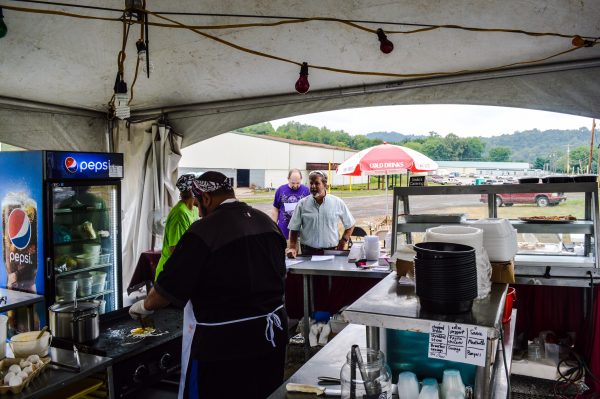
That’s when Coffland saw opportunity.
“What I saw was our West Virginia neighbors going through the growing pains involved when something so big suddenly shows up,” the two-term commissioner said. “But I also saw growth around Ohio County and Marshall County. The hotels that were there were packed full, and a lot of new hotels were under construction. When my wife and I would go out to dinner in one of the counties, we noticed much larger crowds, and if you didn’t see the big trucks everywhere, then you shouldn’t have been driving because you had to be blind.
“From what I could learn by talking to some of the people working for one of the gas companies was that Belmont County was next, and after I was elected to the commission, it really got started,” he continued. “I just wanted to see the same kind of growth in Belmont County, and that has definitely been the case. To be honest with you, I don’t know what we would have done without it.”
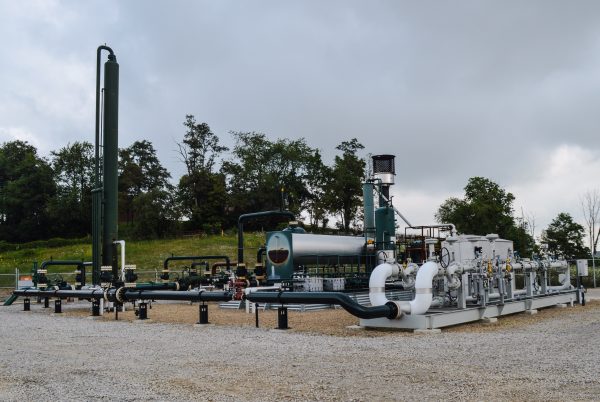
When Coffland initially took office, unemployment was high, the county commission’s budget was reduced because revenue was limited, and the expenses involving law enforcement and corrections were through the roof. The Ohio Valley Mall was suffering with more vacancies since it opened in the late 1970s, and hundreds of miles of roadways were in poor condition and only getting worse as the price for asphalt soared.
Belmont County was depressed.
“And when the economy tanked in 2008, it affected the entire country, and things got worse in our county, too. There’s no question about that,” Coffland recalled. “Investment stopped. Construction of anything stopped. And when Gov. Kasich took office, it got worse because of the way he worked his budget.
“What the governor did was cut our funding from the state by 20 percent, and that couldn’t have come down at a worse time,” he said. “The governor had to do what he had to do for the entire state, and I get that, I really do. But East Ohio was in trouble already, and those cuts restricted our abilities to help our community and the people who needed it the most.”

But six years ago there were 29 lots available in Fox Commerce Park, the county’s industrial development where FedEx constructed a regional distribution center. Today, the industrial area is full with companies like Bill’s Towing, Great Plains, Stingray Energy, and Pivotal Propane.
And one by one, well pads were constructed in Belmont County by Rice Energy, Gulfport, XTO, and several other energy enterprises. The Marcellus Shale play was popular, but more and more local residents were hearing about the Utica Shale formation and crude oil. While the Marcellus was between 6,000 and 8,000 feet below the soil, the Utica was located several thousands of feet beneath.
“There always been oil down there, but it had been so long since anyone drilled for it I think most of us forgot about it,” Coffland said. “And then, all of a sudden, some residents started singing the theme song to the ‘Beverly Hillbillies’ because there it was — the black gold, the Texas tea.

“Today, the action is everywhere, and a lot of people in Belmont County are making money, and they’re getting jobs in the industry,” the commissioner continued. “There’s a slowdown on the amount of drilling this summer compared to the last few because of the way the pricing of gas and oil has been, but I think that has allowed the pipeline companies more time to get those lines installed. You can’t do anything with the gas without those pipelines, so when the drilling picks up again, and it will, the lines will be in place, and that means royalties will start flowing to the people with those contracts.”
And that includes the Belmont County Commission. Coffland, along with commissioners Mark Thomas and Ginny Favede, signed on the bottom line with Gulport and Rice, and those agreements have produced nearly $10 million for the county’s coffers. Coffland estimated the county commission’s budget will increase to as much as $23 million for 2015-2016, a $7 million jump from where the spending was six years ago.
“Although Gov. Kasich reduced the state’s allotment to the state’s counties a second time by another 20 percent in his second two-year budget, we’ve been able to make those dollars up with the development that has taken place with the gas and oil companies and also with the additional development that’s taken place because of those industries,” he said. “Because of the influx of people, hotels, restaurants, gas stations – you name it – have come to the county. And the phone keeps ringing in our office.
“And what the Caffaro Company has done with the Ohio Valley Mall has been incredible,” Coffland said. “When I first took office, the area where Penney’s was had been vacant for years, but then Boscov’s opened, and that made an enormous difference with the amount of shopping that was taking place in Belmont County. We know that because of the sale tax dollars.”
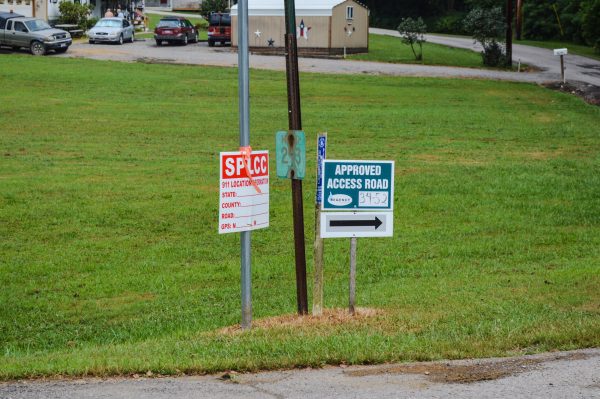
An Automobile’s Alignment
Coffland cruises the county most often in his own truck, and he’s been navigating through a cracked windshield lately as he inspects the pace of development by driving the county’s “country roads.”
“Most of these roads may have never been paved since they were first established, but they have been because of the gas and oil companies and the work of the county commissioners,” Coffland explained. “We work with all of them on what is called a road maintenance-use agreement, and what that does is improve the roadways that these companies are using either before they are using it or afterward.
“And what the county commission has done with some of the monies that we have received for our lease agreements is connect the paving by fixing the roadways in between where the gas companies have paved,” he continued. “We’re hoping that someday we’ll be able to say that all of the roads in Belmont County have been paved because the gas and oil are under our feet as we speak. These companies aren’t going anywhere anytime soon.”
Thus far, 45 miles of county roadways have been paved with industry funds and the county commission has completed another 20 miles. Depending on the depth of the asphalt, paving is priced between $100,000 and $300,000 per mile, and Coffland said there is a total of 308 miles of county roadways in Belmont County.
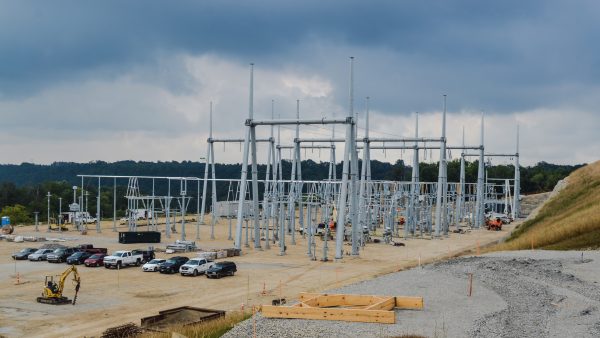
A plethora of federal and state dollars also is flowing into improvements along Interstate 470 and Interstate 70 too, and the continued development of the Mall Road extension is taking place along U.S. 40 near St. Clairsville. When complete, the roadway will connect the plaza and mall retail areas with a state-constructed bridge over I-70.
“When I see the orange barrels in Belmont County, I immediately think about things getting better. Barrels mean better,” Coffland said. “I know there’s been more traffic and more delays, and all of that has been an inconvenience to the residents and everyone who has been driving through the county, but at least the improvements are being made now.
“It’s truly a great time to be a commissioner in Belmont County. We are blessed,” he insisted. “I really didn’t know what to expect when I won the election because of how the economy was, but after 20 years in Meade Township I was confident I could work toward something positive. I didn’t know what that was at the time, but I know what it is today.”
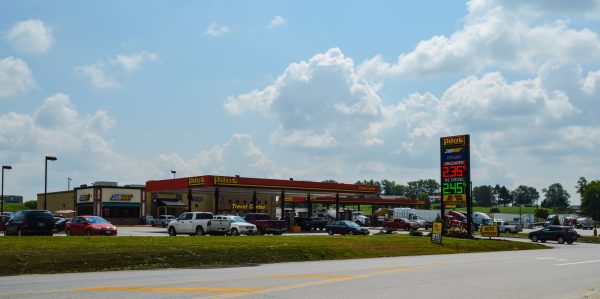
Coffland is a “hands-on” commissioner, as he puts it. All three commissioners, he explained, work diligently on the many issues that face the Belmont County Commission on a daily basis, but he prefers being out of the office and among his constituents. He sees the small gardens and patches of corn mixed in with the pipeline cuts, the compressor stations, and the construction of new housing developments while winding down those county roads, and he also acknowledges the vacant and dilapidated structures that are still present throughout Belmont County.
“I realize that not everyone is benefitting from the gas and the oil, but that’s also why we are working hard for the improvements to reach everyone who lives here,” he said. “That’s why improving the roads is so important to all three of us, and that’s also why we work every single day to bring in new businesses. New businesses mean new jobs.
“When I first started going to Las Vegas for the annual retailers convention, I had to explain to almost everyone exactly where Belmont County was in Ohio,” Coffland continued. “But we haven’t had to do that very often the last couple of years. These days they all know where Belmont County is because they want to come to Belmont County.”
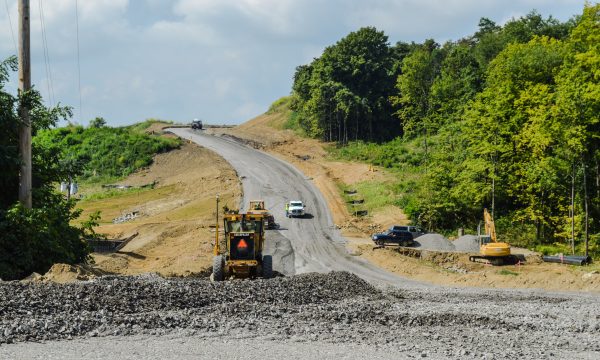
Ethane to Ethylene
It’s very scientific with a lot of long words that are difficult to pronounce, and that is why these large, pipe-entwined, funky-looking facilities are simply known as, “cracker plants.”
Ethylene is vital to many manufacturing operations and is used in the creation of everything from aspirin and medical equipment to football helmets and bulletproof vests. The chemical is considered unique, according to the American Fuel and Petrochemical Manufacturers Association, and that’s because of a part of the molecule called a double bond. The AFPM explains that this part of a molecule is very reactive and well-suited for various different chemical reactions. It’s high-tech engineering and a tremendous amount of energy, and what cracker plants do is break apart molecules to form new molecules imperative to the country’s manufacturing supply chain.
“I’ll be perfectly honest with you; I don’t know everything about a cracker plant,” Coffland said. “But what I do know about a cracker plant is that it creates a lot of jobs, and that’s going to a great thing for this entire Ohio Valley.
“This Valley has lost the steel jobs, and there are fewer coal miners now than ever before. That’s reality,” he continued. “But we’ve gained employment in the county the last couple of years, and if this cracker plant is developed in Belmont County, it will have a huge, positive impact.”
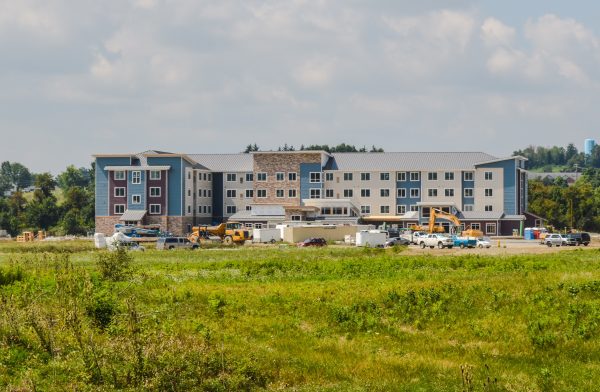
Belmont County was in the running for the construction of a cracker by Royal Dutch Shell, but Beaver County in Pennsylvania – only a 45-minute drive from Weirton – was the selected site. Since that announcement in 2013, though, Shell reduced its workforce by more than 6,000 jobs earlier this month because of the fall of crude prices throughout this year.
What was proposed in April by Thailand’s PTT Global Chemical in Belmont County is what Coffland refers to as, “the big daddy.” The riverfront Dilles Bottom area where FirstEnergy’s Burger power plant is situated would be – could be – the area used for the construction site, and the Belmont County commissioners expect a final decision by the end of 2016.
The facility would cost an estimated $5 billion to construct, and thousands of temporary jobs would be created during the building process and hundreds of permanent, full-time positions would be filled for the operation.
“It would a game changer for sure, but we are not getting ahead of ourselves because we still do not know about their final decision. They continue to study the viability every day here in the county,” he said. “We were hopeful the last time, but Shell chose the Pennsylvania location because they felt it was the best place for them.
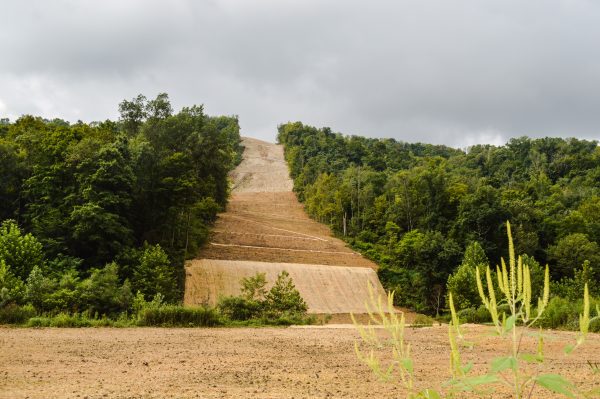
“From what they have told us, their final decision is expected next year, and if this is where it will be constructed, the plant should be operational by the third quarter in 2020,” Coffland explained. “Like I said; I’m very hopeful, but the time to count the chickens hasn’t arrived yet.”
The Dilles Bottom area offers more than just the 160 acres that the Burger Plant occupies now, and Coffland confirmed that PTT would need hundreds of additional 360 acres that run south along the Ohio River. Many houses rest of those acres, and “lay down yards” are occupied by pipeline companies for prep sights.
The private sector also has a presence in the area with Undo’s Family Restaurants operating a mobile facility to sell service to those employed by the oil and gas companies.
“That’s just proof that there are a lot of local companies taking advantage of this situation right now,” the commissioner explained. “There are opportunities available if someone is willing to put forth the effort and the time, and we’re seeing similar setups like the Undo’s one all over the county.
“Where these well pads and pipelines are being installed is mostly very rural, so the restaurants and other businesses have had to go to those areas instead of waiting for them to come to their established locations,” Coffland continued. “All of those businesses are seeing new faces walk in every day, and they are benefitting from that. If they choose to build the cracker plant in Belmont County, those benefits will continue to grow.”
(Photos by Steve Novotney)





